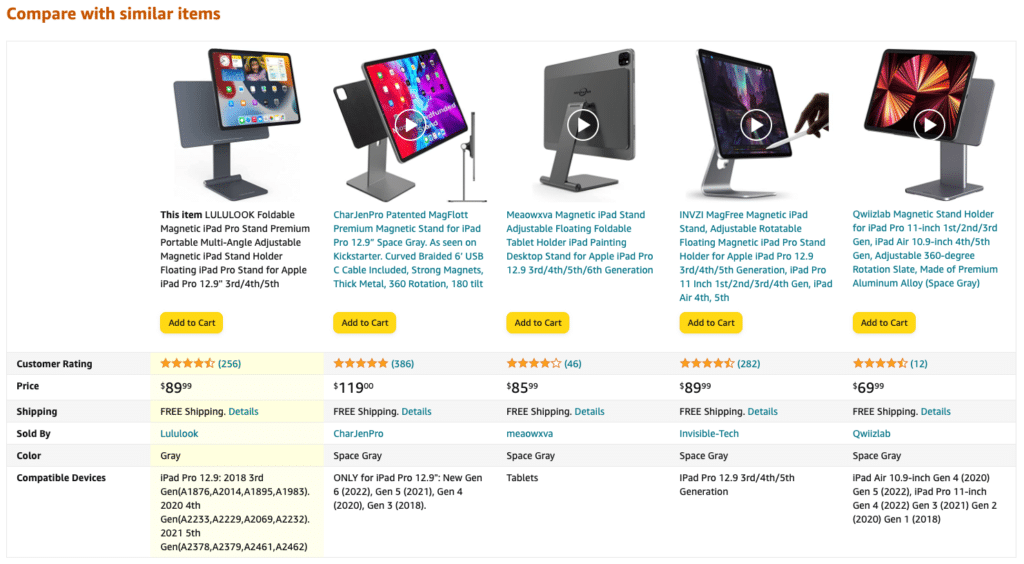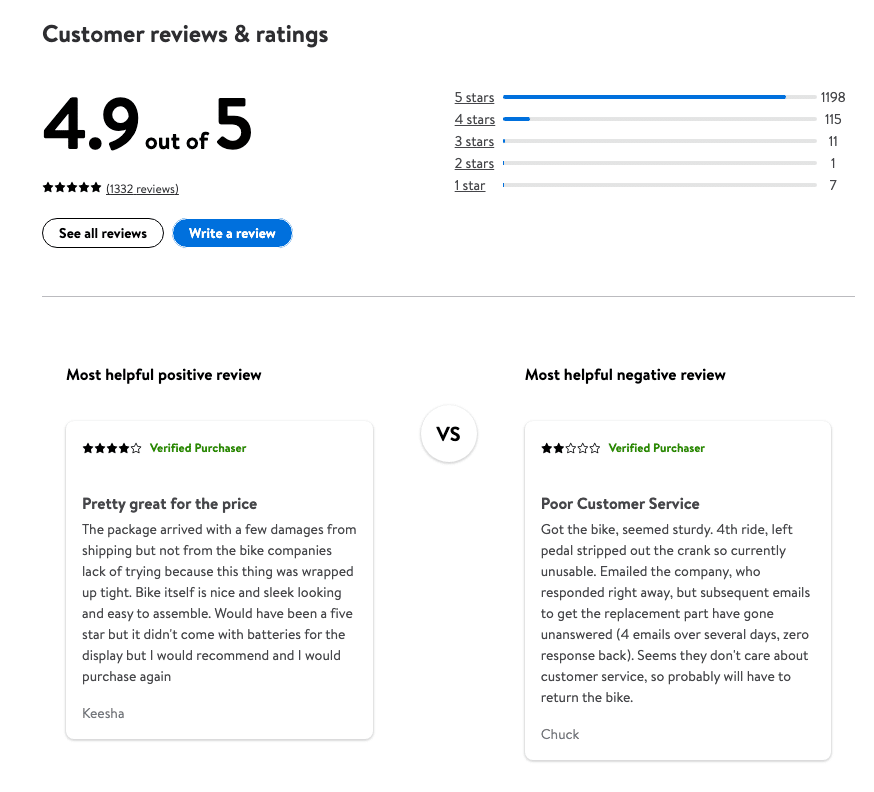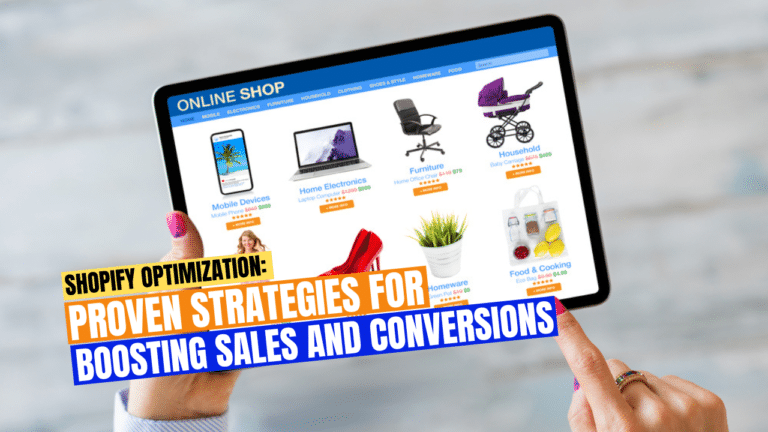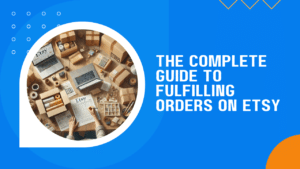Shopify is a popular e-commerce platform that offers businesses the tools they need to sell products online. However, simply having a Shopify store is not enough to ensure success.
To truly thrive, businesses must focus on boosting sales and conversions. In this article, we will explore proven strategies for optimizing a Shopify store to increase sales and conversions. From enhancing the customer experience, to utilizing marketing tactics and product optimization, we will cover all the key elements that are essential for success on Shopify.
Whether you’re a seasoned e-commerce professional or just starting out, this guide will provide the insights and inspiration you need to grow your business.
Customer Experience Optimization
Customers are the lifeblood of any e-commerce business, and their experience on your Shopify store can make or break your success. Optimizing the customer experience is essential for boosting sales and conversion rates. Everything from the moment they land on your website, to browsing products, through the checkout process, right up until they receive their order is vital in the customer experience. You can even go a step above and use custom packaging to enhance the customer experience.
To optimize the customer experience, you need to understand your customers’ behavior and preferences, and then design your store with their needs in mind.
Improving Site Navigation
A well-organized and easy-to-use site can greatly improve the customer experience and increase sales. Make sure your site has clear and intuitive navigation, with categories and subcategories that are easy to find.
Consider using search functionality and filters to help customers quickly find what they’re looking for.
Enhancing Product Descriptions and Images
Product descriptions and images play a critical role in the customer experience and can greatly impact sales and conversions. Make sure your product descriptions are detailed and informative, and include high-quality images that accurately represent the product.
Consider using videos or 360-degree images to provide customers with an even better understanding of your products.
Here are some best practices to follow for both product descriptions and images:
Product Descriptions
- Product descriptions should be detailed and provide customers with all the information they need to make an informed decision.
- Use clear and concise language, and avoid using industry jargon.
- Highlight the key features and benefits of the product, and consider using bullet points to make the information easier to read and understand.
- Include product specifications, such as size, weight, materials, etc.
- Use high-quality images and videos to showcase the product and provide customers with a better understanding of what they’re buying.
Product Images
- Use high-resolution images that accurately represent the product.
- Show the product from multiple angles, and consider using 360-degree images or videos to provide customers with an even better understanding of the product.
- Provide images of the product in use to help customers understand how the product will work for them.
- Use zoom functionality to allow customers to see the product in more detail.
Streamlining the Checkout Process
The checkout process is one of the most critical stages of the customer experience, and even small optimizations can have a big impact.
Make sure your checkout process is quick and easy, with clear and concise instructions.
Requiring customers to create an account before checkout can be a barrier to purchase and increase cart abandonment. Consider offering guest checkout while making it easy for them to create an account. As they are going through the guest checkout process, give them the option to use the information they entered to instantly create an account.
You may be interested in: Signs It Is Time to Outsource Your Shopify Order Fulfillment
Only offering limited payment options can be a barrier to purchase. Offer a variety of payment options, including credit/debit cards, PayPal, and other popular payment methods.
Surprising customers with hidden fees during checkout can lead to cart abandonment. Be transparent about all fees, including shipping and handling, and taxes, during the checkout process.
By optimizing the customer checkout experience, you can create a more enjoyable and seamless shopping experience for your customers.
Read about the Best Shopify Order Fulfillment Apps for Shopfy. These are tools specifically designed for Shopify to assist with the checkout and order fulfillment process.
Marketing Strategies for Shopify
Marketing is an essential component of boosting sales and conversions on Shopify. There are a variety of ways you can market your ecommerce business, and not all of them are necessarily going to work for every business.
For example, True Classic has built a $350 million per year business selling t-shirts largely marketing through Facebook Ads. A marketing channel like SEO would have been more challenging to gain traction and differentiate them from the hordes of other t-shirt companies out there.
Facebook gave them the chance to quickly create a recognizable brand and connect with their potential customers.
By utilizing effective marketing strategies, you can drive traffic to your store and increase sales. Let’s take a look at some marketing channels for your Shopify store.
Email Marketing Tactics
Email marketing is a powerful tool for increasing the conversion rate on your Shopify store. To effectively use email marketing, you need to have a strategy in place for capturing emails, determining the frequency of email sends, and creating valuable and engaging content. Here are a few things to keep in mind.
Capturing Emails: To start building your email list, consider offering incentives, such as a discount code or exclusive content, to encourage customers to sign up for your emails. You can also capture emails through forms on your website, at checkout, or through social media.
Frequency of Email Sends: The frequency of your email sends will depend on your target audience and their preferences. Some businesses send daily emails, while others send weekly or monthly. Experiment with different frequencies to determine what works best for your target audience.
Content of Emails: The content of your emails should be engaging, informative, and valuable to your customers. Consider promoting new products, offering special promotions, and providing customers with valuable content, such as tips, tutorials, or industry news.
Personalization: Personalizing your emails with the recipient’s name, location, and purchase history can greatly increase their relevance and effectiveness.
Segmentation: Segmenting your email list based on customer behavior, preferences, and purchase history allows you to target specific groups with relevant and personalized campaigns.
Calls-to-Action (CTAs): Including clear and prominent calls-to-action in your emails, such as “Shop now” or “Learn more,” can encourage customers to take action, such as visiting your store, making a purchase, or signing up for your newsletter. CTAs should be placed in a prominent location, such as the top or bottom of the email, and be easy to understand.
Social Media Marketing Strategies
Social media is a powerful tool for reaching new customers and driving traffic to your Shopify store. By utilizing social media marketing strategies, you can increase brand awareness, drive sales, and boost conversions.
Social media has become an integral part of the customer journey, and can greatly impact sales and conversions for e-commerce businesses. Social media allows businesses to reach new customers, engage with existing customers, and promote products in a way that is both informative and entertaining.
To effectively use social media to drive traffic and increase conversions for your Shopify store, consider the following tips:
- Develop a consistent brand presence across all social media platforms
- Engage with your followers and respond to their comments and questions
- Share high-quality, eye-catching images and videos of your products
- Offer exclusive promotions and discounts to your social media followers
- Use social media advertising to reach a larger audience and drive traffic to your store
- Utilize analytics to track the success of your social media efforts and make data-driven decisions.
Utilizing Customer Segmentation
Customer segmentation is the process of dividing your customer base into smaller groups based on shared characteristics, such as behavior, preferences, and purchase history.
Identifying Customer Segments: To effectively utilize customer segmentation, you first need to identify the different segments within your customer base. Consider factors such as demographics, behavior, and purchase history when determining segments.
Tailored Marketing Efforts: By targeting specific customer segments with tailored marketing efforts, you can increase the relevance and effectiveness of your campaigns. For example, you could create targeted email campaigns for customers who frequently purchase certain products, or offer special promotions to customers who have not made a purchase in a while.
Personalization: Personalizing your marketing efforts for specific customer segments can greatly increase their effectiveness. Consider using personalized emails, targeted advertisements, and tailored product recommendations based on customer behavior and preferences.
Measure Success: Utilize analytics to measure the success of your customer segmentation efforts and make data-driven decisions. This will allow you to optimize your strategies and continually improve your results.
Implementing Upselling and Cross-Selling Techniques
Upselling and cross-selling are a great way to increase sales and boost your average order on a Shopify store. Upselling involves encouraging customers to purchase a higher-end version of the product they’re considering, while cross-selling involves suggesting complementary products that can enhance the customer’s experience.
Upselling can be achieved by highlighting the benefits of a higher-end product, such as additional features, better quality, or a longer warranty. For example, if a customer is considering purchasing a basic camera, you could suggest a higher-end model with additional features, such as a better lens or more advanced editing software.
Amazon often does this with their “Compare with similar items” section on their product pages.

Cross-selling involves suggesting complementary products that can enhance the customer’s experience. For example, if a customer is purchasing a camera, you could suggest accessories, such as a camera bag or extra memory cards. This not only increases the average order value, but also provides the customer with a more complete and enjoyable experience.
It’s important to implement these techniques in a way that is natural and not pushy. Provide customers with relevant and valuable suggestions, and avoid overwhelming them with too many options. Additionally, ensure that the products you’re suggesting are of high quality and offer real value to the customer.
Product Optimization
Above we discussed the importance of optimizing your product descriptions and images, but there is a lot more you can do to boost the sales of your products.
A/B Testing
Data doesn’t lie, and conducting effective A/B experiments is a great way to refine and improve your product offerings. It is a vital part of any kind of conversion rate optimization plan.
A/B testing involves comparing two versions of a product or website element to determine which one is more effective. By conducting A/B tests, you can identify areas for improvement, optimize your product offerings, and ultimately conversions.
To effectively conduct A/B testing on a Shopify store, consider the following tips:
- Determine your goal: Before conducting an A/B test, determine your goal, such as increasing sales or improving click-through rates. This will help you focus your efforts and make data-driven decisions.
- Test one element at a time: To ensure accurate results, test one element at a time, such as pricing, product descriptions, or images. This will allow you to isolate the impact of each individual element on your overall goal.
- Collect enough data: Ensure that you collect enough data before making any decisions based on your A/B test results. This will ensure that your results are statistically significant and not simply due to chance.
- Use A/B testing tools: Consider using A/B testing tools, such as Google Optimize or Optimizely, to make the process easier and more efficient. These tools can help you set up and run A/B tests, as well as analyze the results.
A few ideas of things that you can A/B test on a Shopify store include:
- Product titles and descriptions: Test different product titles and descriptions to determine which ones are more effective at capturing the attention of potential customers and encouraging them to make a purchase.
- Product images and videos: Test different images and videos of your products to determine which ones are more effective at showcasing your products and encouraging customers to make a purchase.
- Pricing and promotions: Test different pricing structures and promotions to determine which ones are more effective at driving sales and conversions.
- Calls-to-action (CTAs): Test different CTAs, such as “Add to cart” or “Buy now,” to determine which ones are more effective at encouraging customers to make a purchase.
- Website layout and design: Test different website layouts and designs to determine which ones are more effective at enhancing the customer experience and encouraging customers to make a purchase.
Remember, you may think you know what product title or pricing promotion is going to work best for a product on your Shopify store, but until you test it and collect live data, you really do not know for sure.
Utilizing User-Generated Content
User-generated content, such as customer reviews, photos, and videos, can have a significant impact on the customer experience and sales on a Shopify store. By incorporating user-generated content into your product offerings, you can increase the credibility and appeal of your products to potential customers.
Customer reviews are a particularly important form of user-generated content, as they can greatly influence the purchasing decisions of potential customers. Positive reviews can provide social proof and build trust in your brand, while negative reviews can provide valuable feedback and help you identify areas for improvement.
You can see great examples of implementation of this by visiting any Amazon or Walmart product page. They both make customer reviews easy to find and easy to navigate.

To effectively utilize customer reviews and other forms of user-generated content on a Shopify store, consider the following tips:
- Encourage customers to leave reviews: Encourage customers to leave reviews by sending follow-up emails after a purchase or offering incentives, such as discounts or exclusive content, for leaving a review.
- Display reviews prominently: Display reviews prominently on your website, such as on product pages or in a dedicated reviews section. This will allow potential customers to easily access and read reviews.
- Respond to reviews: Respond to customer reviews, both positive and negative, to show that you value their feedback and are committed to providing a positive customer experience.
- Use customer photos and videos: Incorporate customer photos and videos into your product offerings to enhance the appeal and credibility of your products.
- Moderate user-generated content: Moderate user-generated content to ensure that it is appropriate and relevant to your brand. This will help maintain the credibility of your brand and ensure a positive customer experience.
Traffic Acquisition
None of the tips above will matter one bit if nobody ever sees your website.
There are a variety of ways you can drive traffic to your ecommerce website. A few common ones include:
- Utilize social media: Utilize social media platforms, such as Instagram, Facebook, and Twitter, to reach new customers and drive traffic to your Shopify store.
- Offer referral incentives: Encourage your current customers to refer their friends and family by offering incentives, such as discounts or exclusive content.
- Attend events and tradeshows: Attend events and tradeshows related to your industry to network and promote your Shopify store to potential customers.
- Collaborate with influencers: Collaborate with social media influencers and bloggers in your industry to promote your products and reach new audiences.
You may be interested in: Tips for Customer Acquisition for Your Ecommerce Store
Utilizing Search Engine Optimization (SEO)
Another great way to drive traffic to your Shopify store is by leveraging the power and reach of popular search engines such as Google. Many people rely on search engines to find products and services they are interested in. By optimizing your store to target the right search terms, you can get your products in front of those shoppers.
SEO is a huge topic on its own. There are professionals who specialize in doing nothing but making your website more visible in search engines. They often spend years learning their craft.
However, here are a few tips you can keep in mind to help make your Shopify store SEO friendly and give your store a leg up on some of your competitors:
- Conduct keyword research: Conduct keyword research to determine which keywords and phrases your potential customers are using to find products or services related to your niche. Utilize keyword research tools, such as Google Keyword Planner and Semrush, to identify the best keywords to target.
- Optimize your product pages: Optimize your product pages by incorporating target keywords into the page title, meta description, and header tags. Also, make sure your product descriptions are engaging, informative, and optimized with your target keywords.
- Optimize your website structure: Optimize your website structure by using clear and concise URLs, organizing your content with relevant headers, and making sure your website is mobile-friendly.
- Build high-quality backlinks: Build high-quality backlinks from reputable websites to improve your website’s domain authority and search engine rankings. Guest blogging, influencer outreach, and link building campaigns are effective ways to acquire backlinks.
- Monitor your website’s analytics: Monitor your website’s analytics using tools like Google Analytics and Google Search Console to track your search engine rankings, website traffic, and sales. Analyze this data to identify areas for improvement and make data-driven decisions.
You may also be interested in our post about 7 Important SEO Tips For Your Shopify Store.
Paid Advertising Options for Shopify Stores
Paid advertising is a powerful tool for driving traffic to a Shopify store. By using paid advertising options, such as Google AdWords and social media advertising, you can target specific audiences and generate more visibility for your products or services.
Paid advertising allows you to reach potential customers who may not have otherwise found your Shopify store through organic search.
The benefit of paid advertising is that it is highly targeted, allowing you to reach potential customers who are more likely to be interested in your products or services. Paid advertising also provides more immediate results compared to other marketing tactics, which can help boost sales and conversions quickly.
Its ability to bring immediate traffic, also makes it an ideal platform for conducting A/B tests.
Any form of paid advertising campaign can take some experimentation to fine tune your results.
Before beginning any paid advertising campaign you want to make sure that you have clearly defined your target audience. Everything from demographics to interests and behaviors will help you to create effective campaigns.
Create engaging ads that are eye-catching and informative, but make sure they also have a clear call to action.
One of the biggest advantages of paid advertising campaigns is that most platforms allow for retargeting campaigns.
What is retargeting?
Have you ever visited a website, looked at a few products without making a purchase, and then later you are on another website or platform and suddenly an ad pops up for what you were looking for?
That’s retargeting.
Many shoppers do not make a purchase the first time they see something. Retargeting allows you to stay in front of them, so that when they are ready to make a purchase, your store is the first place they think of.
Retention Strategies
While acquiring new customers is important, retaining existing customers can be more cost-effective and lead to higher lifetime value for each customer. Loyal customers are more likely to make repeat purchases and recommend your products or services to others, which can drive more sales and conversions in the long term.
Customer retention also helps to build brand loyalty and a positive reputation for your brand. Satisfied customers are more likely to leave positive reviews, which can in turn attract new customers and boost sales and conversions.
A few customer retention strategies you can implement right away include:
Implementing Customer Loyalty Programs
Implementing a customer loyalty program is an effective way to retain customers, encourage repeat purchases, and ultimately drive sales and conversions on a Shopify store. Keep these things in mind to effectively implement and promote your customer loyalty program:
- Define your loyalty program: Determine what kind of loyalty program you want to offer, such as a points system, cash-back rewards, or discounts on future purchases.
- Make it easy to join: Make it easy for customers to join your loyalty program by including a sign-up form on your website and promoting it in your email campaigns and social media channels.
- Communicate the benefits: Clearly communicate the benefits of your loyalty program to your customers, including the rewards they can earn and how they can redeem them.
- Personalize the experience: Personalize the loyalty program experience for each customer by providing relevant rewards and promotions based on their purchase history and behavior.
- Use gamification: Incorporate gamification elements into your loyalty program to make it more engaging and fun for customers to participate.
- Monitor and adjust: Monitor your loyalty program’s performance and make necessary adjustments to improve customer engagement and retention.
- Promote your loyalty program: Promote your loyalty program in your email campaigns, on your website, and on social media to encourage customer sign-ups and participation.
Providing Exceptional Customer Service
Customer service plays a critical role in customer satisfaction and sales for any business. Good customer service can lead to increased customer satisfaction, which can lead to positive reviews, repeat business, and word-of-mouth referrals.
On the other hand, poor customer service can lead to negative reviews, decreased customer satisfaction, and ultimately, loss of business. This can damage your brand reputation and hinder your ability to attract new customers.
Exceptional customer service should be one of the top things on your mind when designing each page of your website, through each stage of the customer journey to checkout, and all the way through order fulfillment for your Shopify orders.
Customers who feel valued and supported are more likely to continue doing business with your ecommerce store and refer others to your products or services.
Key Takeaways for Boosting Sales and Conversions on Shopify Stores
Boosting sales and conversions on a Shopify store requires a multi-faceted approach that involves optimizing your products, driving traffic to your website, and providing excellent customer service. Here are some key takeaways from the article:
- Optimize your products for search engines and customers by conducting keyword research, enhancing product descriptions and images, and utilizing user-generated content.
- Drive traffic to your website through search engine optimization, paid advertising, and social media marketing.
- Focus on customer retention by implementing customer loyalty programs, providing excellent customer service, and utilizing customer segmentation.
- Use A/B testing to improve product offerings and conversion rates.
- Offer excellent customer service to create a positive customer experience that will encourage repeat business and customer loyalty.
Overall, the strategies discussed in this article can help Shopify store owners boost sales and conversions and grow their e-commerce business. It’s important to implement these strategies effectively and monitor their performance to make data-driven decisions that will lead to continued growth and success.









